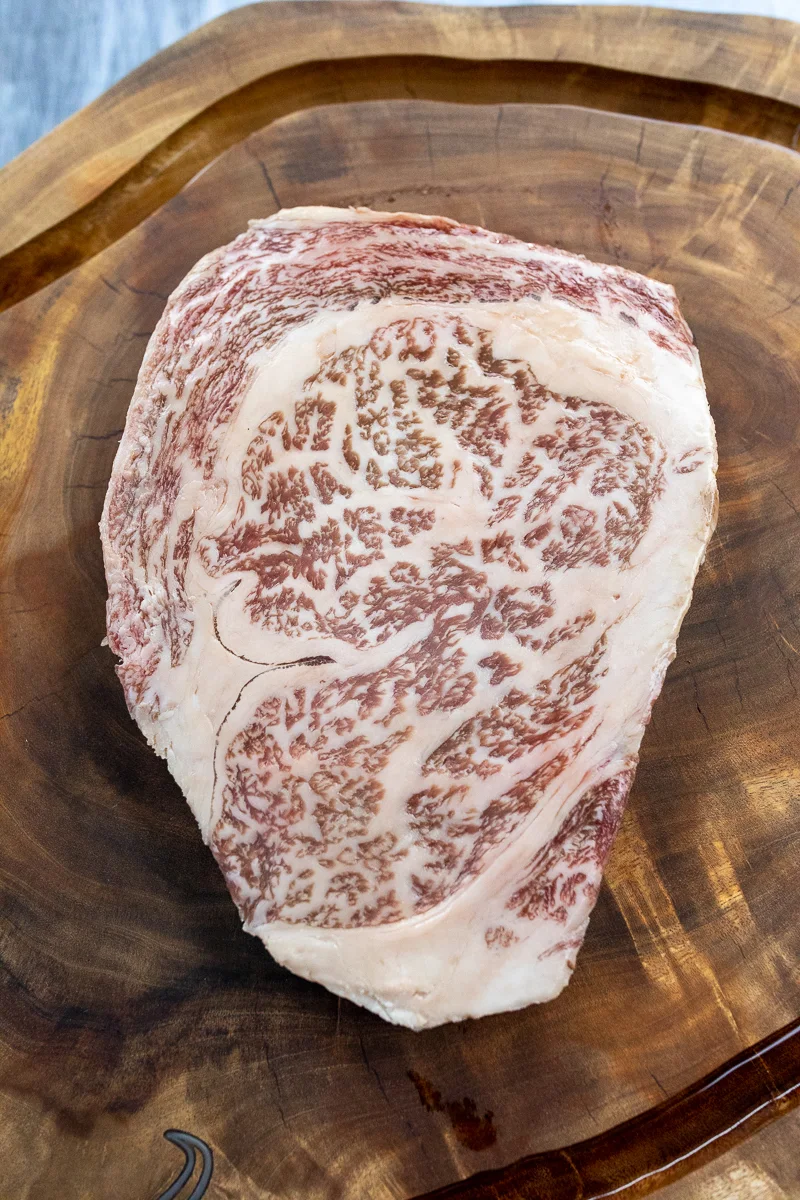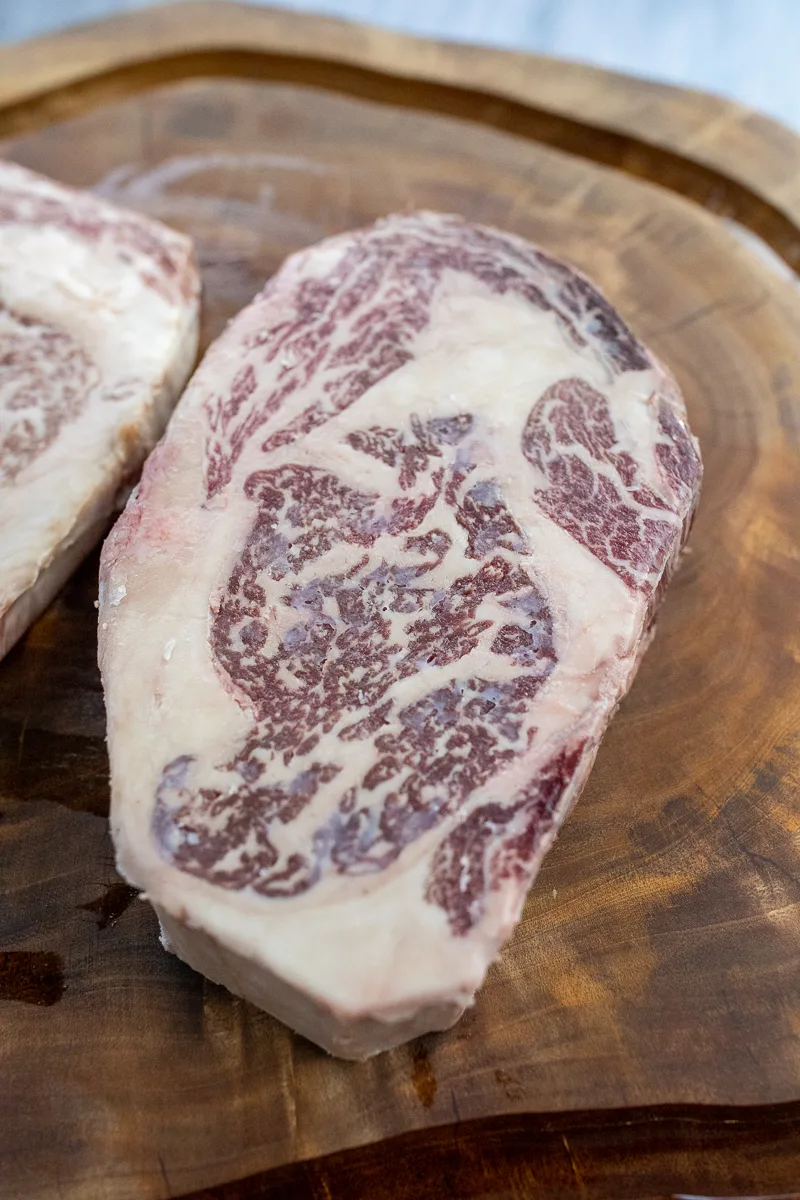Want to get the low-down on A5 Wagyu versus American Wagyu? We tried them both, and I’m going to break it down for you in this post!
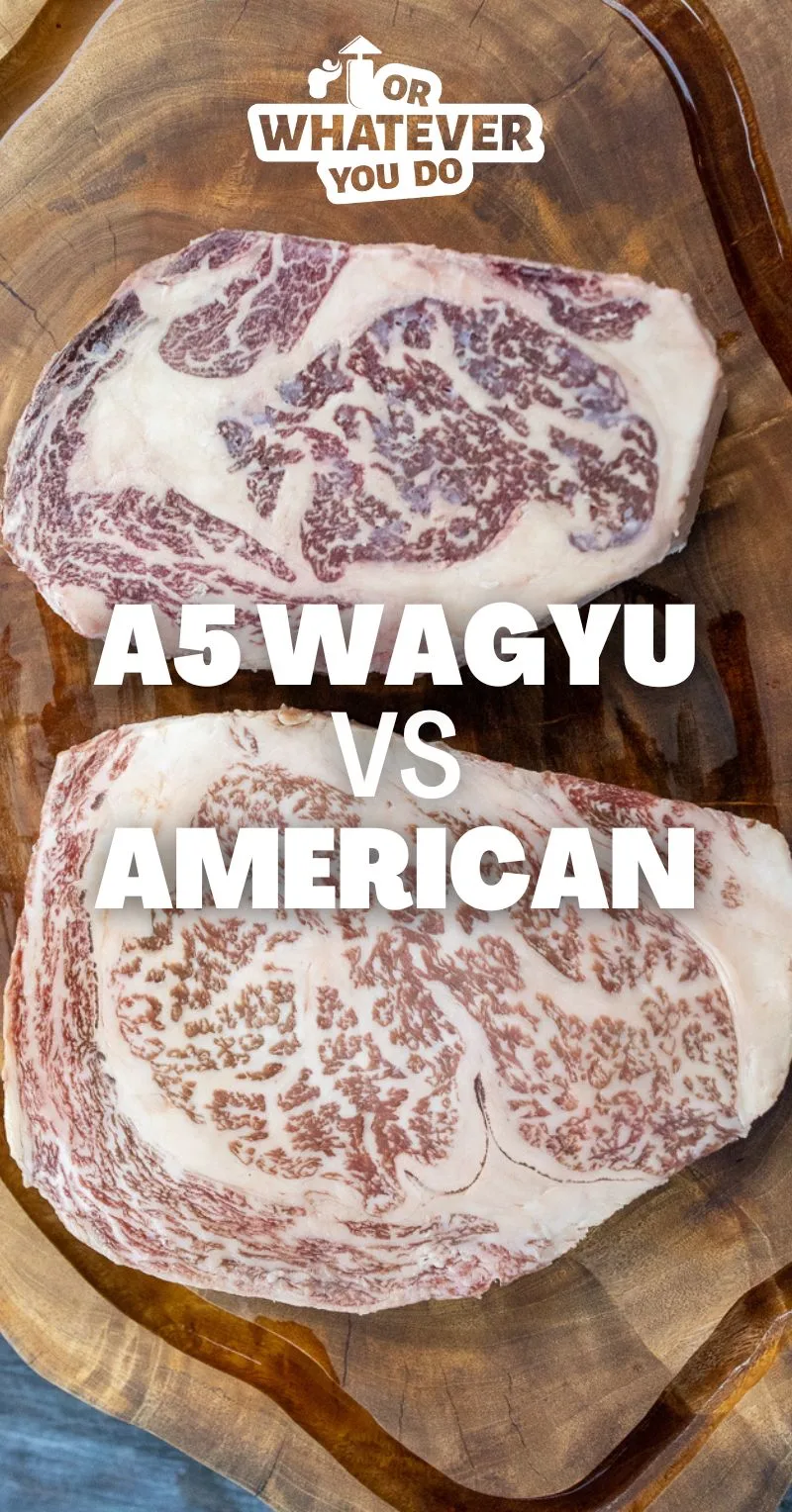
A5 Wagyu vs American Wagyu
A5 Wagyu is a highly prized type of beef originating from Japan. It is renowned for its exceptional flavor, tenderness, and marbling, which refers to the distribution of fat within the muscle tissue. The grading system for A5 Wagyu is based on several factors, including meat quality, fat content, and yield, and only the top 1% of Japanese beef can receive this grade. A5 Wagyu is considered a luxury product and is often served in high-end restaurants.
American Wagyu beef is a type of beef that is produced in the United States from breeds of cattle that have ancestry from Japan’s Tajima strain of wagyu cattle. The production of American Wagyu beef combines traditional Japanese breeding and feeding techniques with American cattle breeding and feeding methods. The resulting beef has some of the same characteristics as authentic Japanese wagyu, including marbling, tenderness, and rich flavor.
American Wagyu beef is typically less expensive than authentic Japanese Wagyu, making it more accessible to a wider range of consumers. Some American producers have their own grading systems for American Wagyu beef, with the highest grades reflecting high levels of marbling and other quality attributes. American Wagyu beef is commonly used in dishes such as steaks, burgers, and roasts, and is enjoyed by meat lovers for its unique flavor and tenderness.
Blackstone American Wagyu Manhattan NY Filet!
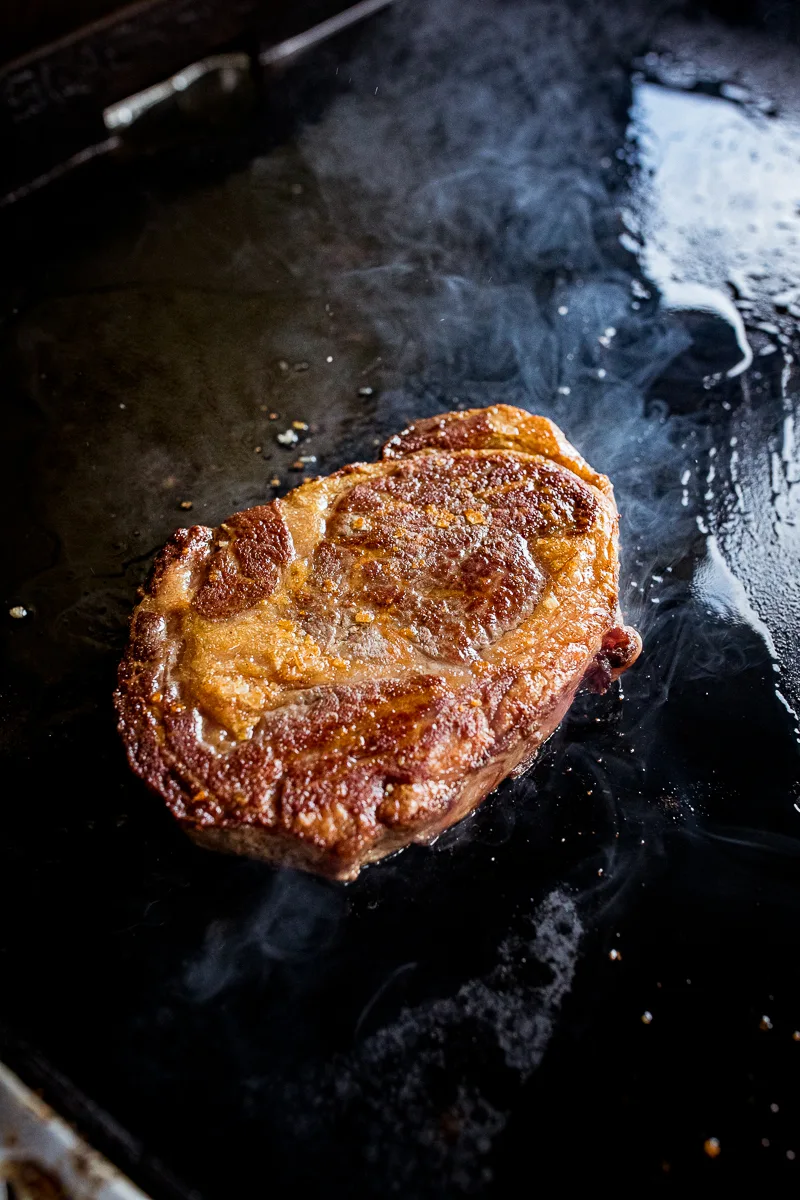
What about the price?
American Wagyu beef is typically less expensive than authentic Japanese wagyu. This is due to several factors, including the difference in cost of production, the smaller market for authentic Japanese wagyu, and the import duties and tariffs associated with exporting Japanese wagyu to other countries.
While American Wagyu beef can still be expensive compared to other types of beef, it is generally more affordable than authentic Japanese wagyu, which is considered a luxury product.
The price difference between American Wagyu and Japanese wagyu can vary greatly, depending on factors such as the specific cut of meat, the producer, and the retailer. However, in general, consumers can expect to pay several times more for authentic Japanese wagyu than for American Wagyu beef.
Thanks to Holy Grail Steaks for sending me these two beautiful pieces of meat (pictured above) for tasting and testing. This post is not sponsored, but it does include affiliate links. All opinions are my own.
How to make A5 Wagyu on the Blackstone
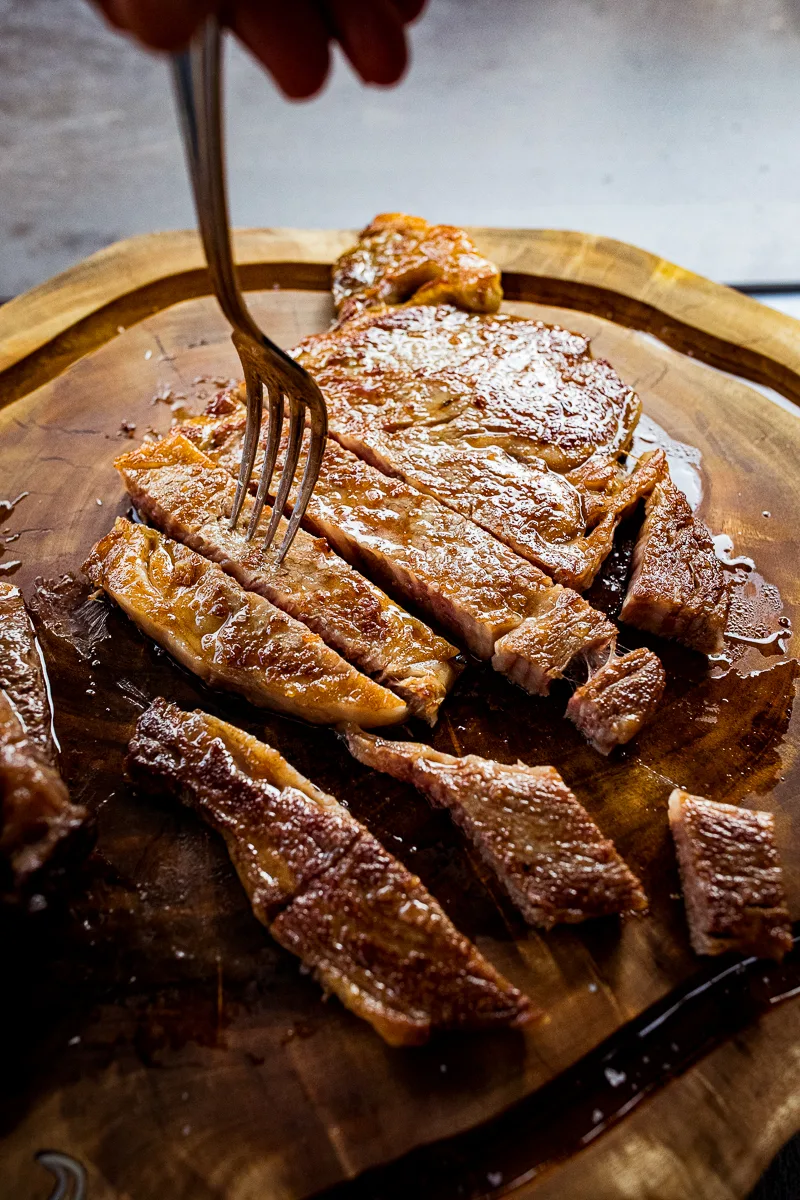
Is American Wagyu as good as Japanese Wagyu?
The quality of American and Japanese Wagyu can vary, but in general, many experts believe that the authentic Japanese Wagyu is considered to be of higher quality due to its specific breeding, feeding and care practices.
Japanese Wagyu is also more highly prized due to its scarcity and cultural significance in Japanese cuisine. However, American Wagyu can still be delicious and high-quality, especially when produced with care and attention to detail. Ultimately, the quality of any particular cut of beef will depend on a number of factors, such as the specific breed, the feed and care the animal received, and the skill of the butcher.
How to cook an American Wagyu Ribeye
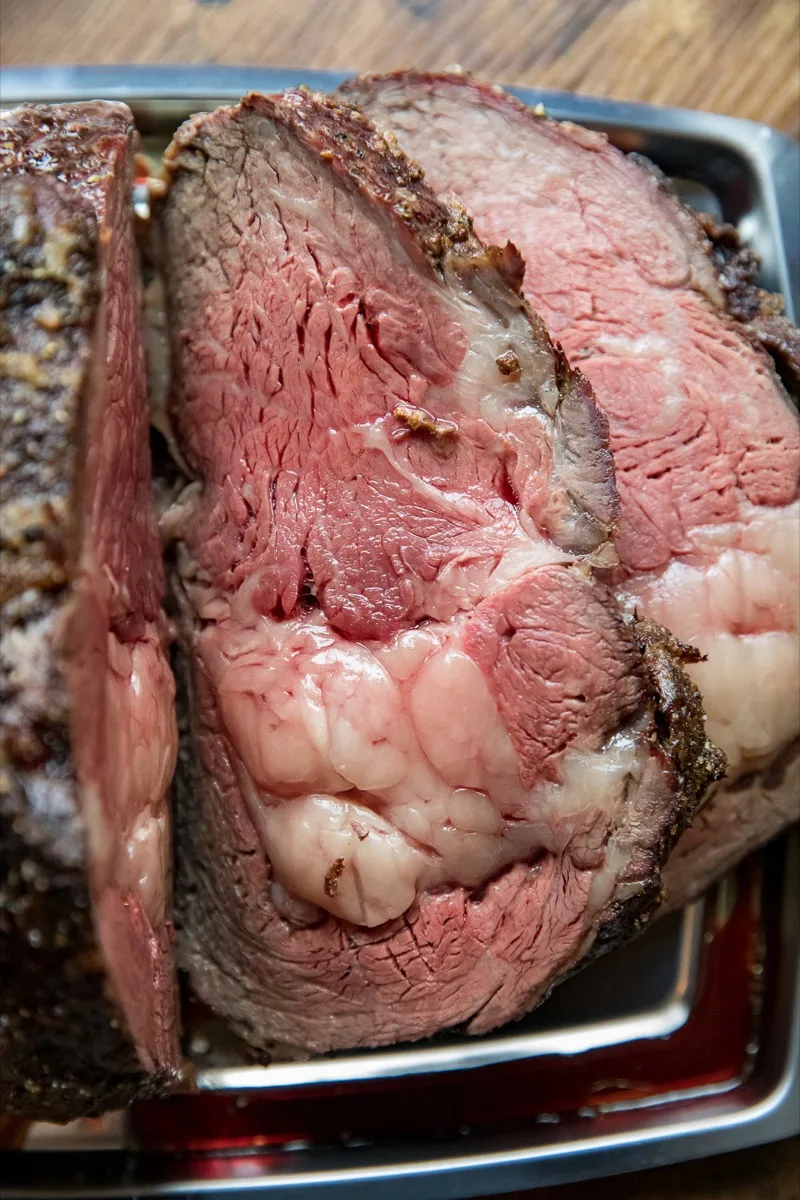
What’s the best way to cook wagyu beef?
The best way to cook American Wagyu beef can vary depending on the cut and desired level of doneness. However, the following cooking methods are generally recommended for American Wagyu beef:
- Pan-frying / Blackstone Griddle:
For cuts like ribeye or strip steak, heat a cast iron skillet over high heat (or fire up the Blackstone), add a little oil, and cook the steak for 2-3 minutes on each side for American Wagyu, or 1-2 minutes per side of Japanese Wagyu – or until it’s browned on the outside and reached the desired level of doneness on the inside. Do not overcook wagyu. Go get a “choice” or “select” grade of meat if you are looking for anything more than medium-rare. - Grilling:
Grilling is a great way to cook thicker cuts of American Wagyu beef, such as a rib roast or T-bone steak. Sear the steak over high heat for a few minutes on each side, then move it to a cooler part of the grill to finish cooking. You can also do the “reverse sear” method if you are using a smoker or pellet grill, and cook the meat at a low temperature for a long period until it reaches 5° under your desired final temp, and then sear over high heat (400°+) on the grill or on a gas griddle or cast iron pan on the stovetop. - Sous vide:
Sous vide cooking involves sealing the steak in a plastic bag and cooking it in a water bath at a precise temperature. This method can help ensure that the steak is cooked evenly and retains its moisture and flavor.
Regardless of the cooking method, it’s important to let the steak rest for a few minutes before slicing into it, to allow the juices to redistribute and prevent them from flowing out of the steak as you cut into it.
Overall, it’s always best to use a meat thermometer to ensure that the steak reaches the desired level of doneness, as different cuts and cooking methods can affect the cooking time and internal temperature.
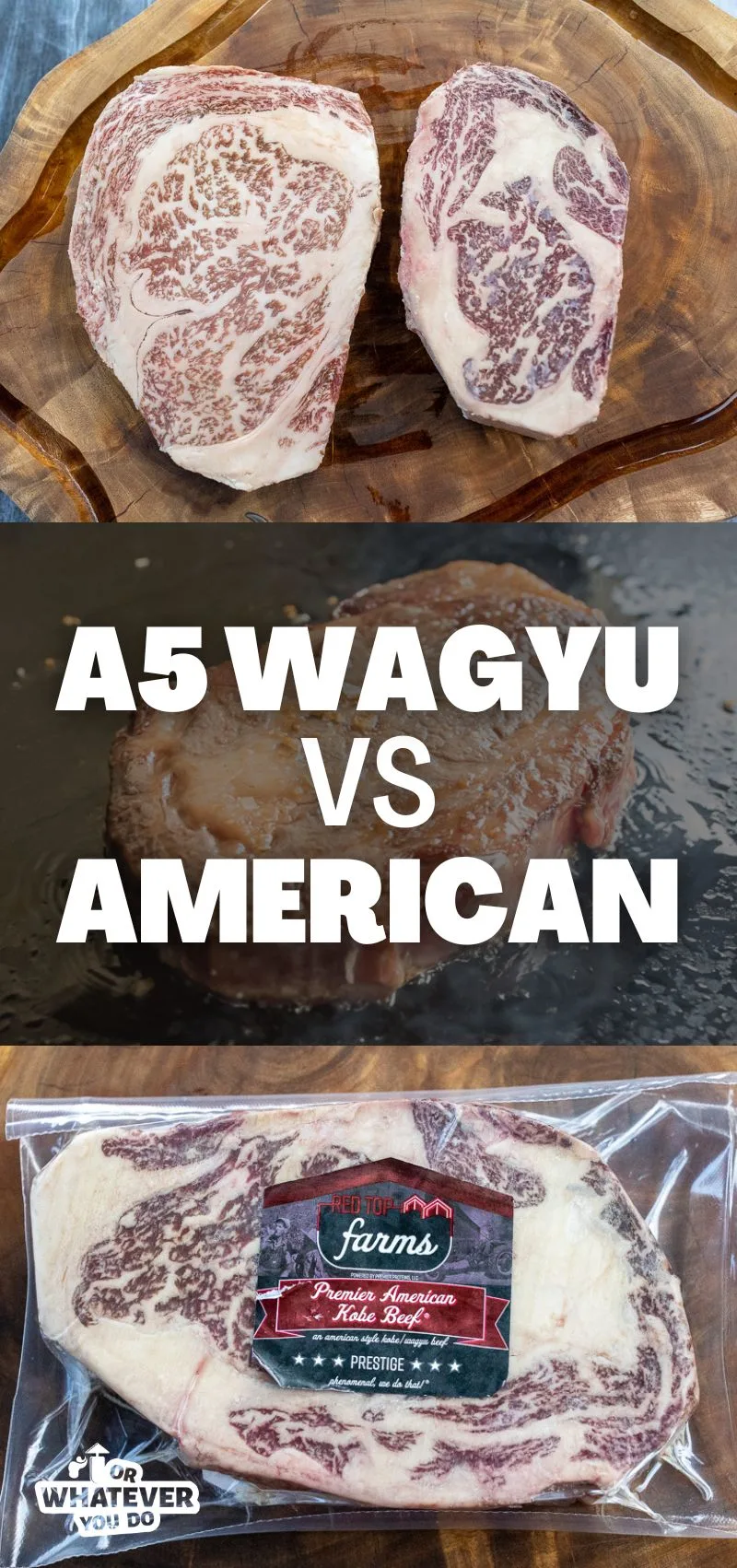
Conclusion
Both American Wagyu and Japanese Wagyu have their benefits and drawbacks. A5 wagyu is a special treat, but isn’t something you can eat a lot of because it is so rich. If you are looking to really make a meal special, springing for one of these is definitely worth it.
For our normal steak dinners? I’m all-in on American Wagyu. It is packed with flavor, super tender, and it is priced competitively with prime grade meat in most cases.
More great steaks to love
- Grilled Tomahawk Ribeye
- Sirloin Cap Steak
- Venison Sirloin Steaks
- New York Strip
- Filet Mignon
- Ribeye Steak
- Flat Iron Steak
- T-Bone
- Hanger Steak
- Flank Steak
- Tenderloin
- Tri-Tip
- My whole collection of Steak Recipes is here!

